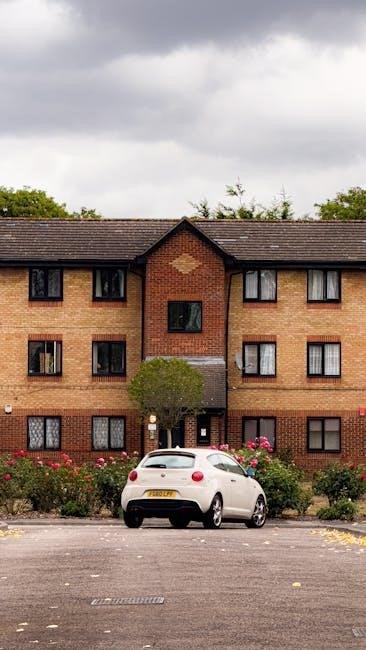Assisted living menus provide structured meal plans, ensuring seniors receive nutritious, balanced meals. These menus, often available as PDFs, offer variety and cater to dietary needs, promoting health and well-being.
Importance of Nutrition in Assisted Living Facilities

Nutrition plays a vital role in maintaining the health and well-being of seniors in assisted living facilities. Proper meal plans help prevent malnutrition, manage chronic diseases, and support overall physical and mental health. Balanced diets tailored to residents’ needs ensure they receive essential vitamins, minerals, and nutrients. Additionally, structured meal times provide social interaction, reducing feelings of isolation and improving mental well-being. Facilities often collaborate with dietitians to create menus that cater to diverse dietary requirements, ensuring meals are both nutritious and appealing. This focus on nutrition not only enhances residents’ quality of life but also supports their ability to thrive independently.
Types of Meals Typically Offered
Assisted living facilities usually provide a variety of meals to cater to residents’ diverse needs and preferences. Breakfast options often include choices like oatmeal, scrambled eggs, toast, and fresh fruits. Lunch and dinner typically feature balanced meals with proteins, vegetables, and whole grains, such as grilled chicken, fish, or vegetarian alternatives. Snacks like nuts, yogurt, or fruit are also commonly available. Facilities often offer a mix of traditional and modern cuisine to keep meals interesting. Additionally, special dietary accommodations, such as low-sodium or gluten-free options, are frequently included. The goal is to provide nutritious, flavorful meals that promote health and satisfaction while accommodating individual preferences and requirements.
Structure of Weekly Menu Plans
A weekly menu plan in assisted living facilities is typically structured to ensure variety, nutrition, and ease of planning. Meals are organized by day, with clear distinctions between breakfast, lunch, dinner, and snacks. Many facilities use a rotational cycle, such as a 4- to 6-week menu, to avoid repetition and keep meals fresh. Each day’s menu includes balanced options, such as proteins, vegetables, and whole grains, alongside desserts or lighter choices. Portion sizes and nutritional information are often included to cater to residents’ health needs. The structure also allows for flexibility, enabling adjustments based on seasonal ingredients or resident preferences. This organized approach ensures consistency while maintaining resident satisfaction and dietary goals.

Benefits of Using a Menu PDF
Using a menu PDF offers streamlined communication, easy accessibility, and consistent presentation of meal plans. It ensures clarity for residents and staff, reducing misunderstandings about offerings.
Standardization of Meal Plans
Standardizing meal plans through a menu PDF ensures consistency in nutritional quality and flavor across all meals. This approach helps facilities maintain uniformity in portion sizes, ingredients, and preparation methods, reducing variability. By following a structured template, menu planning becomes more efficient, and staff can easily replicate dishes. Standardization also aids in training, as new chefs or cooks can follow established guidelines. Additionally, it simplifies inventory management, as ingredient quantities remain predictable. Residents benefit from knowing what to expect, which can enhance their dining experience. Standardized menus also help address dietary restrictions by ensuring accommodations are consistently applied. This consistency fosters trust and satisfaction among residents and their families, making mealtime a reliable and enjoyable part of daily life.
Convenience of Digital Sharing
Digital sharing of assisted living menus via PDFs offers unparalleled convenience for residents, families, and staff. Menus can be easily distributed through email, resident portals, or mobile apps, ensuring everyone has instant access. This eliminates the need for physical distribution, saving time and resources. Digital menus are also easily updateable, allowing facilities to make changes in real-time and share them immediately. Families can review meal plans remotely, providing peace of mind. Additionally, digital formats enable quick searches and zooming in on details, enhancing accessibility for those with visual impairments. This modern approach streamlines communication and keeps everyone informed about daily offerings, fostering a connected and efficient dining experience.
Enhanced Resident Engagement
Digital assisted living menus in PDF format can significantly enhance resident engagement by fostering a sense of community and involvement in dining experiences. Residents can easily review meal options, providing them with a sense of control and agency over their dietary choices. Facilities can also use menu PDFs to solicit feedback through surveys or comment sections, allowing residents to influence future meal plans. This interactive approach not only improves satisfaction but also encourages social interaction during meals. Additionally, visually appealing PDF layouts with images and descriptions can make dining experiences more enjoyable and informative. By involving residents in the process, facilities create a more personalized and engaging dining environment that caters to their preferences and needs.
Components of a Sample Assisted Living Menu
A typical menu includes breakfast, lunch, and dinner options, healthy snacks, and special dietary choices, ensuring variety and nutritional balance while catering to resident preferences and needs.

Breakfast Options and Examples
Breakfast menus in assisted living facilities often feature a variety of nutritious options to start the day. Common choices include scrambled eggs, oatmeal, whole-grain toast, and fresh fruit. Facilities may also offer yogurt parfaits, smoothies, or breakfast cereals. For residents with dietary restrictions, alternatives like gluten-free pancakes or plant-based milk are provided. Hot items such as bacon, sausage, or hash browns are frequently included, alongside beverages like coffee, tea, or juice. Menus are designed to be balanced, ensuring residents receive essential nutrients for energy and well-being throughout the morning. Seasonal fruits and wholesome ingredients are often highlighted to promote freshness and variety.

Lunch and Dinner Varieties
Lunch and dinner options in assisted living facilities are designed to provide balanced nutrition and variety. Common offerings include grilled chicken, fish, or lean meats, paired with seasonal vegetables and whole grains like brown rice or quinoa. Salads, soups, and sandwiches are also popular choices, often made with fresh, locally sourced ingredients. Facilities may rotate menus to include dishes like pasta, stir-fries, or roasted vegetables to keep meals interesting. Desserts such as fruit, pudding, or baked goods are typically available. Meals are prepared to cater to different appetites and dietary needs, ensuring residents enjoy flavorful and satisfying options. Chefs often incorporate herbs and spices to enhance taste without excessive salt or sugar, promoting both nutrition and enjoyment.
Healthy Snack Choices
Assisted living menus often include a variety of healthy snack options to support residents’ nutritional needs between meals. Fresh fruits, such as apples, bananas, and berries, are commonly offered for their natural sweetness and fiber content. Vegetables like carrots, celery, and cucumbers, paired with dips like hummus or ranch, provide crunchy, nutrient-rich choices. Nuts and seeds, such as almonds and sunflower seeds, are popular for their protein and healthy fats. Whole grain crackers, yogurt, and hard-boiled eggs are also convenient snacks that offer sustained energy. Facilities may include hydration options like flavored water or herbal teas. These snacks are designed to be easy to eat, nutritious, and appealing, ensuring residents stay satisfied and energized throughout the day.
Special Dietary Accommodations
Assisted living menus often cater to residents with specific dietary needs, ensuring meals are both nutritious and inclusive. Common accommodations include vegetarian, vegan, gluten-free, and low-sodium options. These adjustments are made to align with individual health requirements, such as diabetes management or food allergies. Menus may also avoid allergens like nuts, dairy, or shellfish to ensure safety. Facilities frequently label dishes with clear identifiers, making it easy for residents to identify suitable choices. Additionally, menus are designed to accommodate cultural or religious preferences, offering diverse and respectful meal options. By prioritizing these accommodations, assisted living facilities promote inclusivity and ensure all residents can enjoy balanced, satisfying meals. This approach fosters a supportive dining environment tailored to individual needs.
Customization and Dietary Needs
Customizing menus ensures residents receive meals tailored to their preferences and health requirements, fostering a personalized dining experience that respects individual needs and promotes well-being.

Adapting Menus for Individual Preferences
Assisted living facilities often prioritize customization to meet residents’ unique preferences, ensuring meals are both enjoyable and nutritionally balanced. Menus are regularly tailored to accommodate personal tastes, cultural backgrounds, and lifestyle choices. For instance, residents may request spicier dishes or prefer vegetarian options. Facilities also consider feedback from residents to refine menu offerings, creating a more personalized dining experience. This approach fosters a sense of autonomy and satisfaction, as residents feel their preferences are valued. Additionally, incorporating seasonal ingredients and rotational menu items helps maintain variety while catering to individual tastes. This adaptability ensures that meals remain engaging and satisfying for all residents.

Addressing Common Dietary Restrictions
Assisted living facilities must address common dietary restrictions to ensure meals are safe and enjoyable for all residents. These restrictions often include vegetarian, vegan, gluten-free, low-sodium, and dairy-free diets. Menus are carefully designed to accommodate these needs while maintaining nutritional balance. For example, gluten-free alternatives are provided for residents with celiac disease, and plant-based protein sources are included for vegetarian and vegan options. Facilities also ensure that meals are prepared separately to avoid cross-contamination. Regular communication between residents, dietitians, and chefs helps identify and address specific dietary requirements. This personalized approach ensures that every resident receives meals that align with their health and lifestyle needs, fostering a supportive and inclusive dining environment.
Ensuring Menu Variety
Ensuring menu variety is crucial in assisted living facilities to keep meals appealing and satisfying for residents. Facilities often rotate menus weekly or seasonally to incorporate diverse flavors and ingredients. This approach prevents monotony and caters to different tastes and preferences. Menus may feature a mix of traditional dishes, international cuisines, and modern twists to keep dining experiences engaging. Seasonal ingredients are frequently used to ensure freshness and variety. Additionally, facilities may offer themed meals or special event menus to add excitement. Regular feedback from residents helps refine menu offerings, ensuring a balance of familiar favorites and new options. This variety not only enhances dining satisfaction but also supports residents’ overall well-being and enjoyment of mealtime.
Role of Dietitians and Chefs
Dietitians and chefs collaborate to create balanced, nutritious meals tailored to residents’ needs. Dietitians ensure meals meet dietary requirements, while chefs focus on preparation and flavor, enhancing dining experiences.
Dietitian Involvement in Menu Planning
Dietitians play a crucial role in designing menus for assisted living facilities. They assess residents’ nutritional needs, ensuring meals are balanced and meet health requirements. With expertise in nutrition science, dietitians craft meal plans that cater to diverse dietary needs, including diabetes, heart health, and food allergies. They also ensure that menus align with nutritional guidelines and promote overall well-being. By collaborating with chefs, dietitians help create meals that are both wholesome and appetizing; Their involvement guarantees that the menu supports residents’ health while maintaining variety and flavor, fostering a positive dining experience for the community.
Chefs’ Role in Meal Preparation
Chefs in assisted living facilities are essential for executing well-planned menus. They prepare meals that are not only nutritious but also appealing to residents. Skilled chefs ensure that each dish meets the dietary standards set by dietitians, using fresh ingredients to maintain quality. They also accommodate special requests and preferences, making mealtime enjoyable. Chefs work closely with dietary teams to ensure meals are tailored to residents’ needs. Their expertise in flavor and presentation enhances the dining experience, fostering a sense of community. By focusing on taste and variety, chefs play a vital role in making mealtime a highlight of the day for residents, ensuring satisfaction and comfort.
Ensuring Nutritional Balance and Taste
Striking a balance between nutrition and flavor is a priority in assisted living menus. Dietitians and chefs collaborate to craft meals that are both wholesome and appetizing. Nutrient-rich ingredients are selected to support residents’ health needs, while culinary expertise ensures dishes are flavorful. Seasonal produce and whole foods are often used to enhance taste and nutritional value. Regular menu reviews help maintain variety and balance, addressing residents’ dietary preferences. This approach fosters a positive dining experience, promoting well-being and satisfaction among residents. The combination of nutrition and taste ensures meals are not only healthy but also enjoyable, making mealtime a fulfilling part of daily life in assisted living communities.

Accessing and Creating Menus
Menus can be accessed via facility websites or management software. Creating them involves using templates and dietary software to design balanced and appealing meal plans efficiently.
Where to Find Menu Templates
Menu templates for assisted living facilities can be found online through Google search, with platforms like Google Docs and Microsoft Office offering customizable layouts. Websites specializing in healthcare and senior care resources also provide downloadable PDF templates. Additionally, many food service software solutions include menu planning tools with pre-designed templates tailored for senior living. These templates often feature sections for daily meals, nutritional information, and special dietary notes. Facilities can adapt these templates to suit their specific needs, ensuring consistency and professionalism in their menu presentations. Customizing templates allows for branding with facility logos and color schemes, making the menus both functional and visually appealing for residents and families.
Customization Tips for Facilities
Facilities can tailor their assisted living menu PDFs to reflect their brand and meet residents’ preferences by incorporating logos, colors, and fonts. Adding resident feedback sections encourages participation and ensures meals align with tastes. Using clear, large fonts improves readability for seniors. Highlighting dietary information, such as low-sodium or gluten-free options, aids in quick identification. Seasonal menu themes enhance variety and engagement. Including photos of dishes can stimulate appetite and make choices easier. Facilities should also consider offering multiple format options, such as print and digital versions, to accommodate different resident needs. Regular updates to the menu PDF ensure freshness and relevance, keeping residents informed and excited about meal options.

Future Trends in Assisted Living Dining

Future trends in assisted living dining emphasize personalized nutrition, tech-driven meal planning, and sustainable food sourcing to enhance resident well-being and satisfaction.
Technology Integration in Menu Planning
Technology is revolutionizing menu planning in assisted living facilities, offering innovative solutions for personalization and efficiency. Digital platforms now allow residents to view menus, select preferences, and provide feedback through interactive tools. Facilities are adopting data analytics to track dietary trends and optimize meal plans based on resident preferences and health data. AI-powered menu planners are emerging, enabling the creation of balanced and varied meal options while adhering to nutritional guidelines. Additionally, digital sharing of menus via PDFs or apps ensures transparency and accessibility for residents and families. These advancements not only streamline operations but also enhance the dining experience, making it more tailored and engaging for seniors.
Sustainability in Food Choices
Sustainability in food choices is becoming a key focus for assisted living facilities, aiming to reduce environmental impact while promoting health. Many facilities now prioritize sourcing ingredients from local farmers to minimize transportation emissions and support the local economy. Seasonal produce is often highlighted in menus to ensure freshness and reduce reliance on out-of-season imports. Additionally, efforts to reduce food waste are implemented through portion control and creative meal planning. Eco-friendly packaging and composting programs are also being adopted. These practices not only benefit the environment but also offer residents nutritious, wholesome meals. By integrating sustainability, facilities align with modern dietary values and contribute to a healthier planet for future generations.
